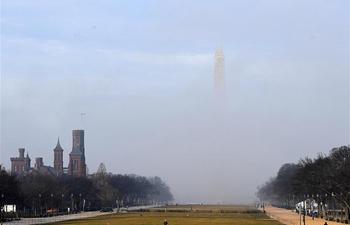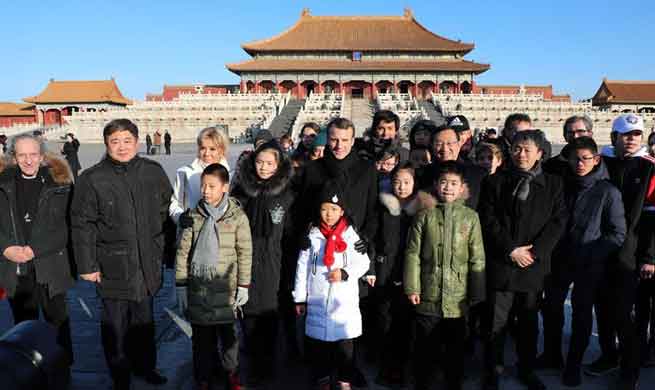SEOUL, Jan. 10 (Xinhua) -- The jobless rate among South Korean youths aged 15-29 hit a record yearly high in 2017, with the number of those unemployed topping 1 million, a government report showed Wednesday.
The youth unemployment rate stood at 9.9 percent in 2017, according to Statistics Korea. It was the highest since the statistical agency began compiling the relevant data in 2000.
The number of youths employed was 435,000 in 2017, equaling to the figure in 2016 and the highest since 2000.
The sentiment jobless rate for the younger generation reached a whopping 22.7 percent in 2017, up 0.7 percentage points from the previous year.
The official unemployment rate refers to those who are immediately available for work, but fail to get a job in the past four weeks despite efforts to actively seek a job.
The sentiment rate adds those who are too discouraged to seek a job, those who work part-time against their will to work full-time and those who prepare to get a job after college graduation to the official jobless rate.
The sentiment rate began to be compiled in January 2015 to more accurately reflect labor market conditions.
Jobless rate for all generations stood at 3.7 percent in 2017, unchanged from the previous year.
The number of those unemployed reached 1,028,000 in 2017, topping 1 million for the second consecutive year. It was the highest since the statistical agency began compiling the relevant date according to the current standard in 2000.
It was attributed to an increase in the number of the unemployed among those aged 25-29, in their 30s and 60s or higher.
South Korean President Moon Jae-in, who took office in May last year, vowed to make all-out efforts to create jobs, but those efforts had yet to take effect.
Moon said in his first New Year's press conference earlier in the day that his government's top priority was creating decent jobs, reiterating his pledge to foster growth through job creation.
Job creation theoretically leads to more household income, which boosts private consumption. More consumption leads to higher corporate earnings, which can result in more employment by companies.
President Moon implemented a supplementary budget plan to create jobs in the second half of last year, vowing to increase employment in the public sector and encourage private companies to hire more workers by providing subsidies.
Meanwhile, the number of those employed totaled 26,552,000 in 2017, up 317,000 from the previous year.
It was up from an employment of 299,000 in 2016, but it stayed below the creations of 337,000 jobs in 2015 and 533,000 jobs in 2014 respectively.
Manufacturers hired 4,469,000 workers in 2017, down 0.3 percent from the prior year. Those working at construction companies gained 6.2 percent last year, with those in the healthcare and social welfare sector growing 3.3 percent.
The economically inactive population, or those aged above 15 minus the sum of those employed and unemployed, was 16,171,000 in 2017, slightly up 2,000 from the previous year.
Those who were economically inactive for childcare and schooling reduced last year, but the so-called "take-a-rest" group increased 6.5 percent.
The group refers to those who replied that they took a rest during a job survey period. It is important as the group can include those who are unemployed and too discouraged to search for work for an extended period of time.
Discouraged workers, who were too discouraged to seek a job, reached 483,000 in 2017, up 36,000 from the prior year.
The hiring rate rose 0.3 percentage points over the year to 60.7 percent in 2017. The OECD-method employment rate for those aged 15-64 gained 0.5 percentage points to touch a record yearly high of 66.6 percent.
The hiring rate gauges the percentage of working people to the working-age population, or those aged above 15. The employment rate is used as an alternative to jobless rate, and the government sets its long-term target at 70 percent.















